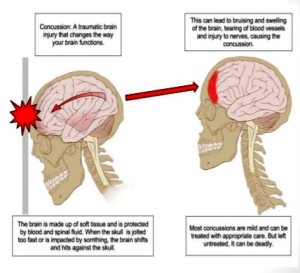While a thorough neurological history and examination with a qualified professional should be performed for any suspected head injury, particular emphasis should be placed on the eyes, because they are closely connected to the brain.
Vision and eye movement are critical to assess the higher brain centers that control various eye reflexes. The eyes can tell a great deal about the integrity of these cranial nerves, as well as the higher brain centers that regulate eye functions.
Patients can suffer devastating and debilitating consequences such as vertigo, dizziness, balance problems, cognitive dysfunction, emotional disorders, headaches, and many others.
The following is a list of symptoms of visual problems which can result from brain injuries:
- Blurred vision
- Sensitivity to light, glare sensitivity
- Reading difficulties; words appear to move
- Comprehension difficulty
- Attention and concentration difficulty
- Memory difficulty
- Double vision
- Aching eyes
- Headaches with visual tasks
- Inability to maintain visual contact
- Reduction or loss of visual field
- Visual field loss
- Difficulties with eye movements, such as:
- ocular pursuits (eye tracking ability)
- saccadic (shifting gaze rapidly from one point to the other)
- accommodative inability (focusing)
- binocular vision (eye alignment, eye teaming)
While present thinking is a “sit and wait ” approach , some experts feel this is entirely unacceptable,
as early intervention can be critical with concussion, but only time and research will tell, in the meantime, the eye and all its connections should be closely monitored and studied.

